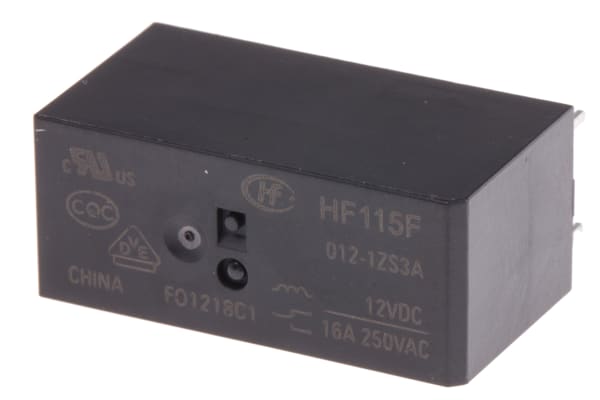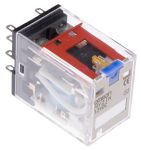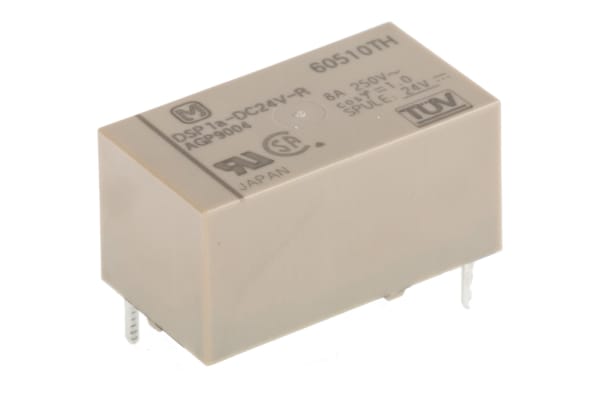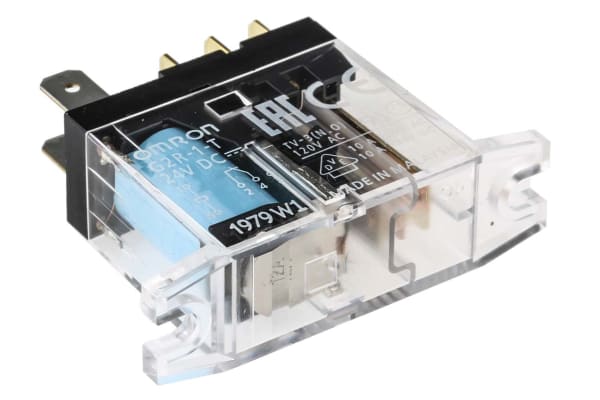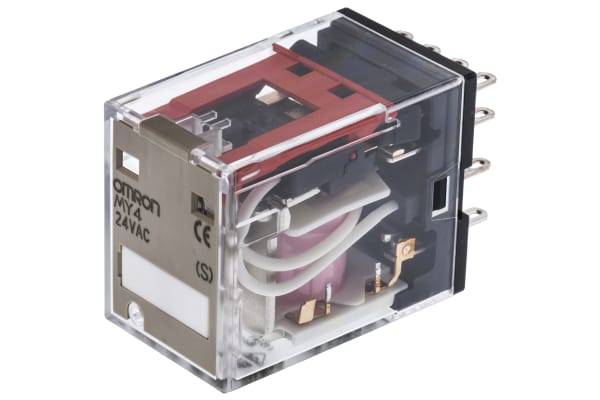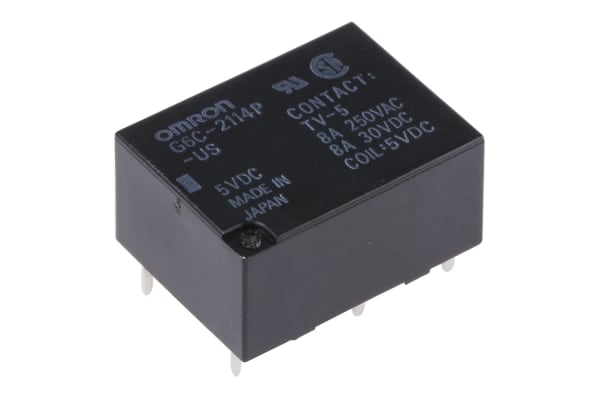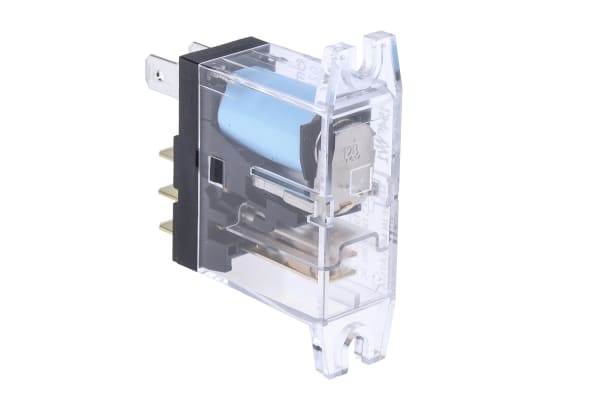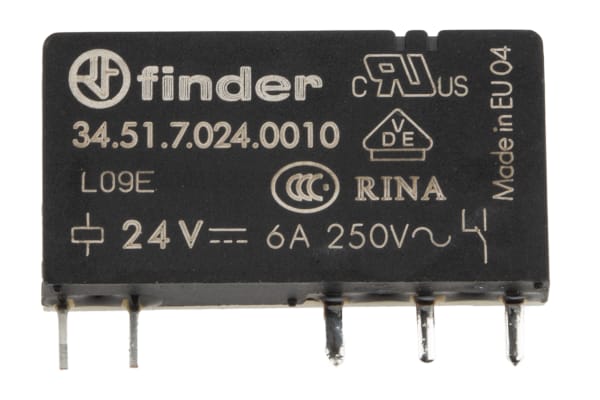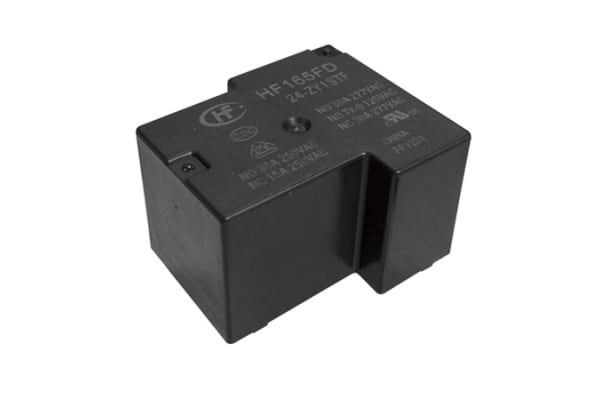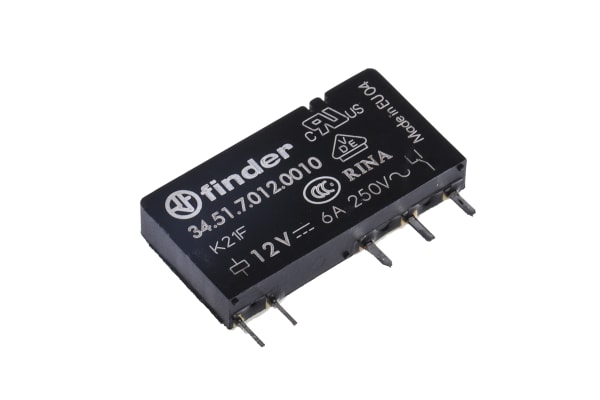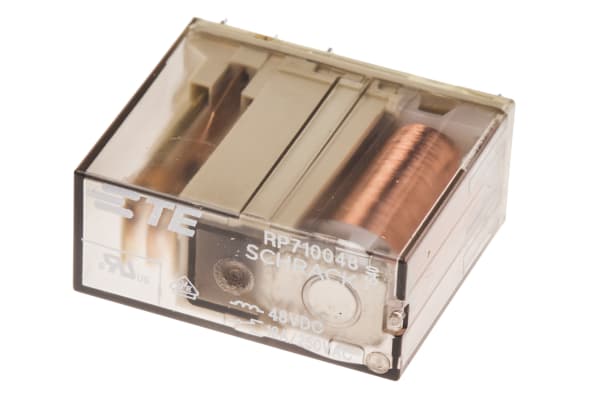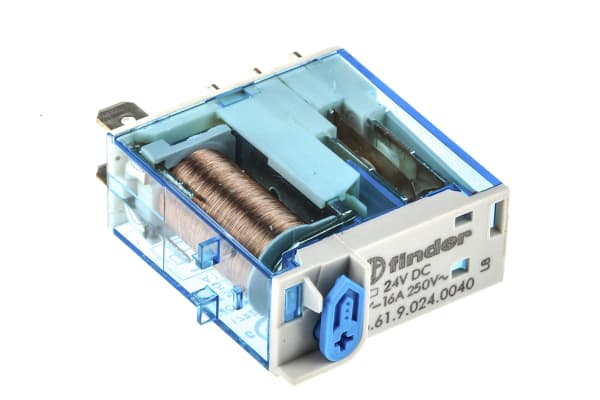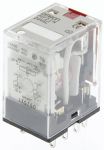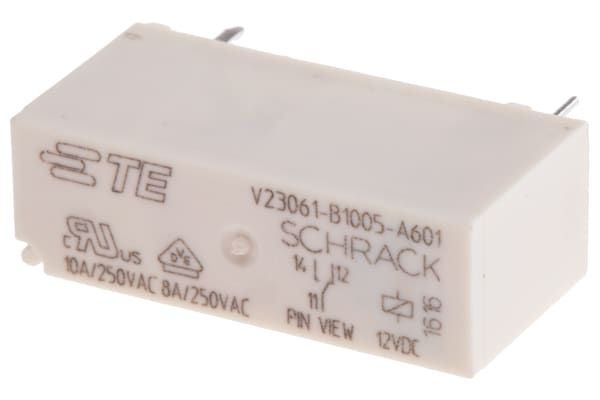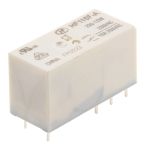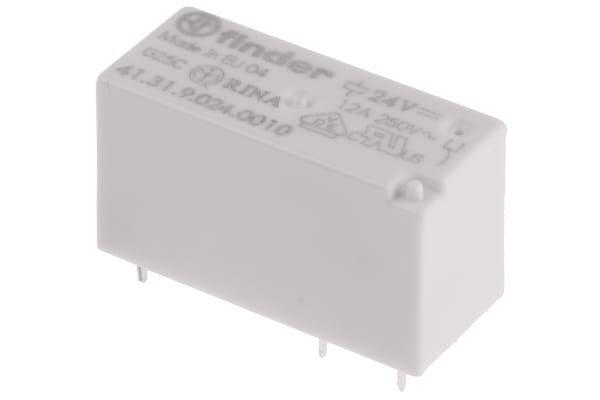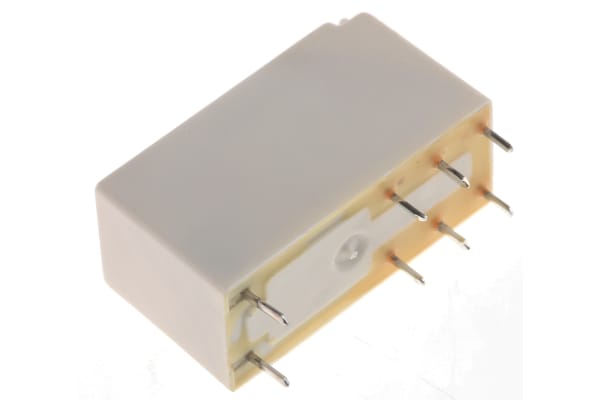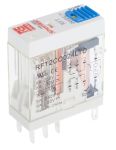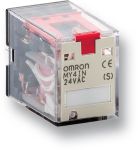Non-Latching Relays
Relays are electrical switches that are operated by electrical impulses with the primary function to open and close a circuit, they can also be referred to as industrial switches. There are 2 main types available, latching and non–latching relays.How do non-latching relays work?Non-latching relays are in a normally closed (NC) position and will stay in this state without power. When power passes through the circuit, the relay switched to a normally open (NO) position by using an internal coil to generate a magnetic force, holding this NO position. Once the current is turned off, it returns to the NC position. This makes non-latching relays well suited to push-button applications like keyboards and micro-controller input buttons.What are non-latching relays used for?Non-latching relays are highly durable and versatile components, making their performance long lasting and suitable for use in a wide range of applications, such as:Automotive enginesHousehold appliancesIndustrial machineryMedical equipmentTelecommunications equipmentWhat is the difference between latching and non-latching relays?Both types of relays in similar in design and function, however, a significant difference between them is that a latching relay will remain in the last position it when it was last powered, whereas a non-latching goes back to its normal position. This makes each more type of relay suitable for different applications. Considerations when selecting a relayWhen choosing a relay, it is important to consider a number of specifications to ensure it is fit for purpose, some factors include:Coil voltage – the required voltage to actuate the switching mechanism. If a voltage is too high this could damage the components, if it is too low then it will not actuate. Contact configuration – This is the state the contacts are in without power. For example SPST, single pole single throw.Contact material – the relay contacts are available in many materials that have certain properties. Common materials are gold, silver, tin oxide and nickel Coil power – the amount of power (watts) the coil operates at. This must match the power in the circuit for correct function. Coil resistance – the amount of resistance (ohms) in the circuit that the coil creates.
-
RS PRO, 12V dc Coil Non-Latching Relay SPDT, 16A Switching Current PCB Mount Single Pole
IDR74,681.68 -
Carlo Gavazzi, 24V ac Coil Non-Latching Relay 4PDT, 5A Switching Current Plug In, 4 Pole, RMIA45024AC
IDR116,008.34 -
Finder, 110V ac Coil Non-Latching Relay SPDT, 16A Switching Current PCB Mount Single Pole, 40.61.8.110.0000
IDR148,314.46 -
Omron, 12V dc Coil Non-Latching Relay DPDT, 10A Switching Current Plug In, 2 Pole, MY2IN 12DC(S)
IDR149,678.03 -
Panasonic, 24V dc Coil Non-Latching Relay SPNO, 5A Switching Current PCB Mount Single Pole, DSP1A-DC24V-R
IDR71,744.76 -
Omron, 24V dc Coil Non-Latching Relay SPDT, 10A Switching Current Panel Mount Single Pole, G2R-1-T DC24
IDR54,962.36 -
Omron, 24V ac Coil Non-Latching Relay 4PDT, 5A Switching Current Plug In, 4 Pole, MY4 24AC (S)
IDR129,748.93 -
Omron, 5V dc Coil Non-Latching Relay DPST, 8A Switching Current PCB Mount, 2 Pole, G6C-2114P-US 5DC
IDR105,624.23 -
Omron, 12V dc Coil Non-Latching Relay SPDT, 10A Switching Current Panel Mount Single Pole, G2R-1-T DC12
IDR69,542.07 -
Finder, 24V dc Coil Non-Latching Relay SPDT, 6A Switching Current PCB Mount Single Pole, 34.51.7.024.0010
IDR110,029.61 -
Hongfa Europe GMBH, 24V dc Coil Non-Latching Relay SPNO, 30A Switching Current PCB Mount Single Pole, HF165FD/24-HY1TF
IDR95,135.23Pack (1 Pack of 2) -
Panasonic, 24V dc Coil Non-Latching Relay SPDT, 3A Switching Current PCB Mount Single Pole, DS1E-S-DC24V
IDR91,673.86 -
Finder, 12V dc Coil Non-Latching Relay SPDT, 6A Switching Current PCB Mount Single Pole, 34.51.7.012.0010
IDR107,722.03 -
Finder, 12V dc Coil Non-Latching Relay SPDT, 16A Switching Current Plug In Single Pole, 46.61.9.012.0040
IDR122,721.30 -
TE Connectivity, 48V dc Coil Non-Latching Relay SPDT, 16A Switching Current PCB Mount Single Pole, RP710048
IDR106,148.68 -
Finder, 24V dc Coil Non-Latching Relay SPDT, 16A Switching Current Plug In Single Pole, 46.61.9.024.0040
IDR126,916.90 -
Omron, 24V ac Coil Non-Latching Relay DPDT, 10A Switching Current Plug In, 2 Pole, MY2IN 24AC (S)
IDR213,136.48 -
TE Connectivity, 12V dc Coil Non-Latching Relay SPDT, 8A Switching Current PCB Mount Single Pole,
IDR120,413.72 -
RS PRO, 230V ac Coil Non-Latching Relay SPDT, 16A Switching Current PCB Mount Single Pole
IDR125,028.88 -
Finder, 24V dc Coil Non-Latching Relay SPDT, 12A Switching Current PCB Mount Single Pole, 41.31.9.024.0010
IDR125,658.22 -
Finder, 24V dc Coil Non-Latching Relay SPDT, 16A Switching Current PCB Mount Single Pole, 41.61.9.024.0010
IDR117,791.47 -
RS PRO, 24V dc Coil Non-Latching Relay DPDT, 8A Switching Current Plug In, 2 Pole
IDR127,756.02 -
Omron, 220/240V ac Coil Non-Latching Relay DPDT, 5A Switching Current Plug In, 2 Pole, MY2-GS 220/240VAC
IDR85,275.57 -
TE Connectivity, 12V dc Coil Non-Latching Relay SPNO, 10A Switching Current PCB Mount Single Pole, OJE-SH-112HM,000
IDR141,181.94Pack (1 Pack of 5)



